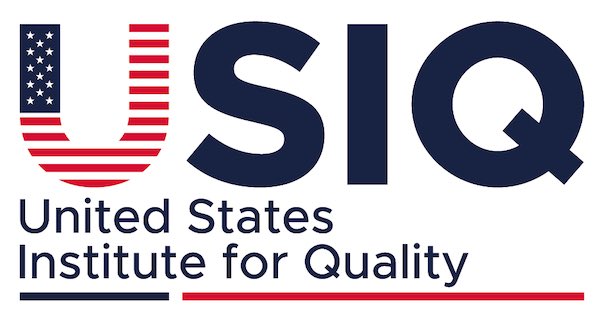|
Getting your Trinity Audio player ready...
|
Employee turnover is a critical problem in the current business environment for any organization that seeks to be competitive. More and more companies are asking themselves: how can we prevent fluctuation? High turnover rates are a problem because they affect the flow of work, raise the costs of hiring and developing new employees, and may hurt the mood and effectiveness of the team. To meet these challenges, organizations should develop strategies that help build a healthy workplace, satisfy employees’ needs, and create conditions for their engagement and commitment.
Employee Retention: How To Increase
Understanding Employee Turnover
Employee turnover is the number of employees an organization loses within a given period. It can be classified as either constructive, including resignations, or actual, including layoffs or terminations. Although it is normal and, to some extent, desirable for an organization to experience some degree of turnover, high turnover is undesirable.
Some causes of employee turnover include poor remuneration, little or no career advancement, poor management, time management, and unfavorable organizational culture. Only by understanding them can one start working on the best ways of retaining the employees.
The Importance of Employee Retention
-
Cost Savings
Attracting, recruiting, and onboarding new employees is time-consuming and costly. According to industry studies, the cost of replacing an employee can range from 125% to 150% of their annual salary, depending on their role and seniority. These costs include advertising job openings, conducting interviews, performing background checks, and providing training to new hires. Beyond direct expenses, there are hidden costs, such as lost productivity and the burden on existing employees who must temporarily cover the responsibilities of the vacant role.
-
Enhanced Productivity
Experienced employees are a valuable asset to any organization. They have a deeper understanding of their roles, internal processes, and company objectives, enabling them to perform their tasks more efficiently and accurately. Unlike new hires, who require time to acclimate and achieve optimal performance, long-term employees can hit the ground running and contribute consistently to the organization’s success.
-
Stronger Team Dynamics
When employees remain with an organization for an extended period, they develop strong interpersonal relationships with their colleagues. This familiarity fosters trust, mutual respect, and effective collaboration, which are essential components of a high-performing team. Long-term employees often act as stabilizing forces, ensuring continuity in workflows and helping to resolve conflicts with minimal disruption.
-
Positive Employer Branding
Employee retention directly influences an organization’s reputation in the job market. High turnover rates can signal poor management practices, lack of growth opportunities, or an unhealthy work environment, deterring potential talent from considering the organization as an employer of choice. Conversely, a low turnover rate is a testament to a positive workplace culture and effective retention strategies.
Strategies to Prevent Employee Fluctuation
Preventing high employee turnover is a complex problem that should be solved at the cause level. Below are some effective strategies:
1. Salary and Wages and other Benefits
Compensation is among the most common causes of turnover; employees are unhappy with their wages. Organizations must develop their pay structure to be equitable to other companies in the same sector. Besides salaries, health insurance, retirement packages, sick leave, and organizational wellness programs can greatly improve employees’ morale.
2. Potential Career Paths
Employees consider it important to have a chance to develop themselves and build new skills. Training courses, sponsorship, and well-defined career opportunities will encourage employees to continue working with the organization. Performance appraisals and individual training plans signal to employees that there is a future in the organization.
3. Good Leadership and Management
Leadership is critical to make employees happy. Managers should encourage employees to share information, give positive and negative feedback, and appreciate employees. Management training on leadership skills is essential to ensure managers have the skills to lead teams and sustain their morale effectively.
4. Work-Life Balance
One of the leading causes of employee turnover is burnout, so work-life balance should be considered a key factor in employee retention. Some ways include allowing employees to work flexible hours, work from home, and take breaks after working for a certain period. It also means that organizations should not overload employees with a lot of work to do.
5. Positive Workplace Culture
A supportive and inclusive culture is a strong motivator to stay at work. There are things that organizations should do; they should embrace and encourage respect, diversity, and team spirit. Other measures that could help enhance the workplace environment include tackling conflicts and enhancing communication.
6. Recognition and Rewards
Appreciating employees for their efforts increases morale and loyalty to the company. As simple as it may seem, speaking positive words, offering monetary benefits, or announcing someone’s accomplishment in front of co-workers is a way of telling employees that their work is appreciated.
7. Employee Engagement Strategies
Best practices reveal that when employees are engaged, they do not intend to quit. Surveys, feedback, and including employees in decision-making can increase engagement. Teambuilding activities and social events also help increase bonding by making everyone feel they are part of the team.
8. Transparent Communication
When employees and management can talk freely, trust is formed. Ensuring employees are well-informed about organizational changes, objectives, and difficulties makes them feel appreciated.
9. Exit Interviews
When employees resign, exit interviews can provide important information concerning the reasons for the employees’ decision to resign. This feedback can assist organizations in understanding trends and making changes where necessary to keep their employees and prospective employees
Measuring Retention Success
To determine the success of the implemented retention strategies, organizations should consider measuring employee satisfaction index and employee engagement. These metrics are useful for determining where there is room for improvement and to ensure that efforts are still working.
Overcoming Common Retention Challenges
Nevertheless, there are cases when organizations struggle to keep their employees. Addressing these challenges requires a proactive approach:
Adapting to Changing Workforce Expectations:
The modern workforce, especially millennials and Gen X and Y, want to work flexible hours, have meaning in their work, and be given room to develop. Companies need to address these new expectations to be successful.
Addressing Industry-Specific Challenges:
Certain sectors, like retail or the hotel industry, have a naturally high turnover of employees. It is, therefore, important that retention strategies are designed to suit these sectors.
Balancing Short-Term and Long-Term Goals:
Although retention strategies are usually designed to produce an impact in the short term, organizations should also explore how to build satisfaction and commitment in the longer term.
Conclusion
Any organization needs to retain its employees to achieve its objectives. Knowing the factors that lead to turnover and employing various measures can help organizations build a healthy workplace culture that will not lose its workforce. With competitive salaries and remunerations, career growth, and a strong focus on employee satisfaction, employers and employees are well-served by a clear approach to retention. Unfortunately, focusing on the satisfaction of employees is not just a simple way of investing but a way of fostering strong and healthy workers. Learn more about the Importance of Employee Retention.
Related Articles
A successful social media marketing strategy for B2B success depends on trust development while sharing valuable content that targets decision-making [...]
Every employer understands the importance of retaining their employees because this is one way through which their business can grow [...]
Email marketing represents an effective strategic tool for business growth in the online field. Your email marketing strategy requires active [...]
The competitive marketplace demands that businesses go beyond the ordinary and stand out as the key to success. Trust is [...]





